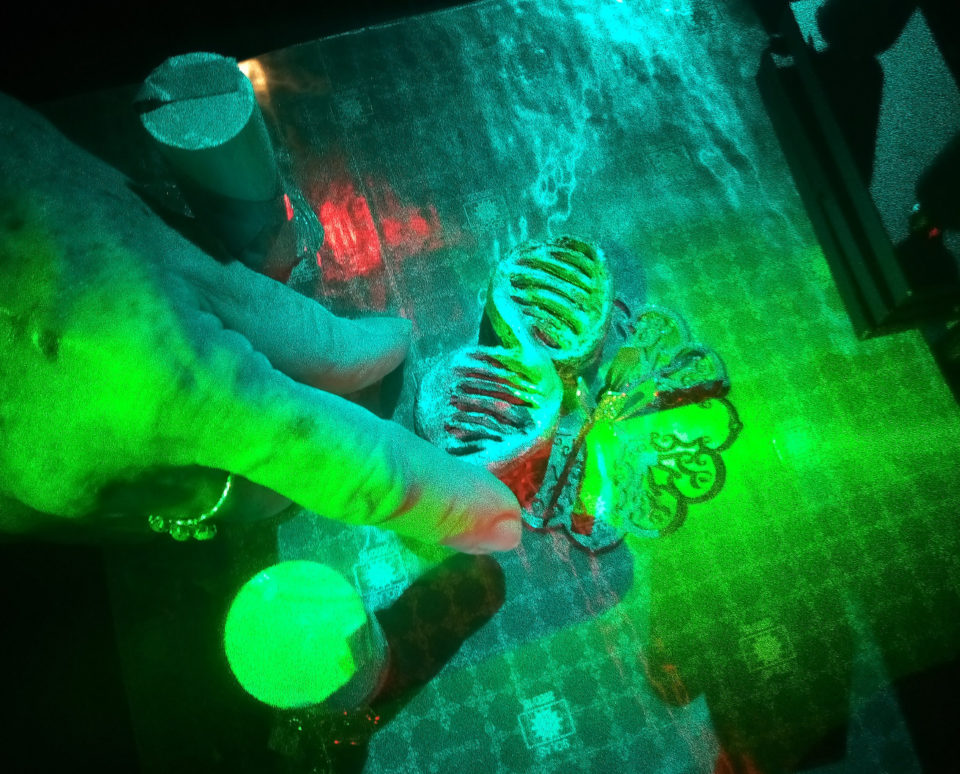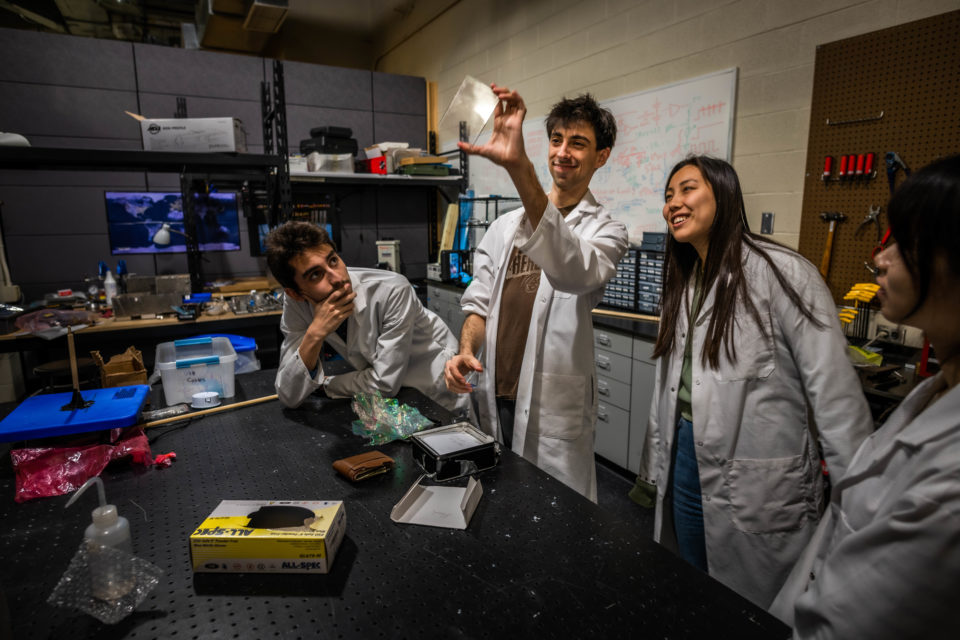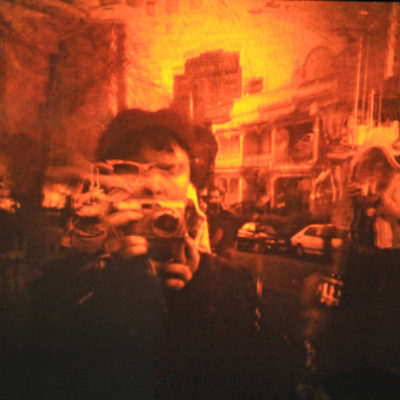We invite all members, supporters and friends of the HoloCenter to be part of the selection of the first holographic art pieces to be sent to space. Please fill out this form to do so!
Cornell University is in the final assembly stages of the Alpha CubeSat, a small spacecraft designed and built by students of Professor Mason Peck’s Space Systems Design Studio. The spacecraft shall demonstrate novel light sailing technology, aimed at the future goal of interstellar travel.
In this not too distant future, scientists wish to send probes to Alpha Centauri in the search for extraterrestrial life on earth-like planets. Holography may play a central role in this mission.
These gram-scale probes could accelerate on laser-propelled holographic light sails, which serve the dual purpose of stability when riding on a laser beam, and a message plaque for any intelligent life that could one day discover such probes. These holograms can store gigabytes of information–images, certainly, but also digital data, like a DVD. Imagine a next-generation spacecraft with a holographic sphere composed of hundreds or more images, of us, the Earth, and artwork throughout history, to present to the cosmos.
While the Alpha CubeSat is not actually going to Alpha Centauri, our holograms are a stepping stone towards both of those applications:
1. Elements of each of the holograms are retroreflective, and the 3 lasers used to create a holographic exposure of the physical objects (red, green, blue) were phased 60 degrees apart to enable multiple viewing angles. When mounted on a spinning CubeSat, their retroreflective nature could allow for observation from the ground, and thus verification of the holograms’ ability to withstand the space environment.
2. The physical objects that the holograms were made from are sculptures created by Brooklyn-based artist C Bangs. She and her partner Greg Matloff, light sail physicist on the advisory committee for Breakthrough Starshot, collaborated with former HoloCenter Director Martina Mrongovius on this project. All of the images have life-centric themes with the common thread of DNA. Inspired by the Pioneer Plaques and the Voyager Golden Record of the 1970’s, they contrast the robotic aesthetic of most spacecraft, and serve as a representation of life on earth.
The holograms are laminated to Alpha’s solar panels, where they impede less than a percent of the collectable radiation. That tiny reduction in power is a small price to pay to create art in space and to demonstrate this key technology.
There are 8 holograms total, but only a subset of these will fly on the CubeSat. The first hologram was selected by the Alpha team. The second by Cornell students, friends, and family. Now, we invite members and affiliates of the Center for the Holographic Arts to select the third.
This form presents photographs of the holograms and the corresponding physical objects that the holographic exposures were made from. We are excited to share this small but meaningful step on this interstellar journey with all of you!
As the renown Cornell Professor Carl Sagan once said, “We have lingered long enough on the shores of the cosmic ocean. We are ready at last to set sail for the stars”
Sincerely,
The Alpha CubeSat Team
Space Systems Design Studio Cornell University



 Martina Mrongovius
Martina Mrongovius